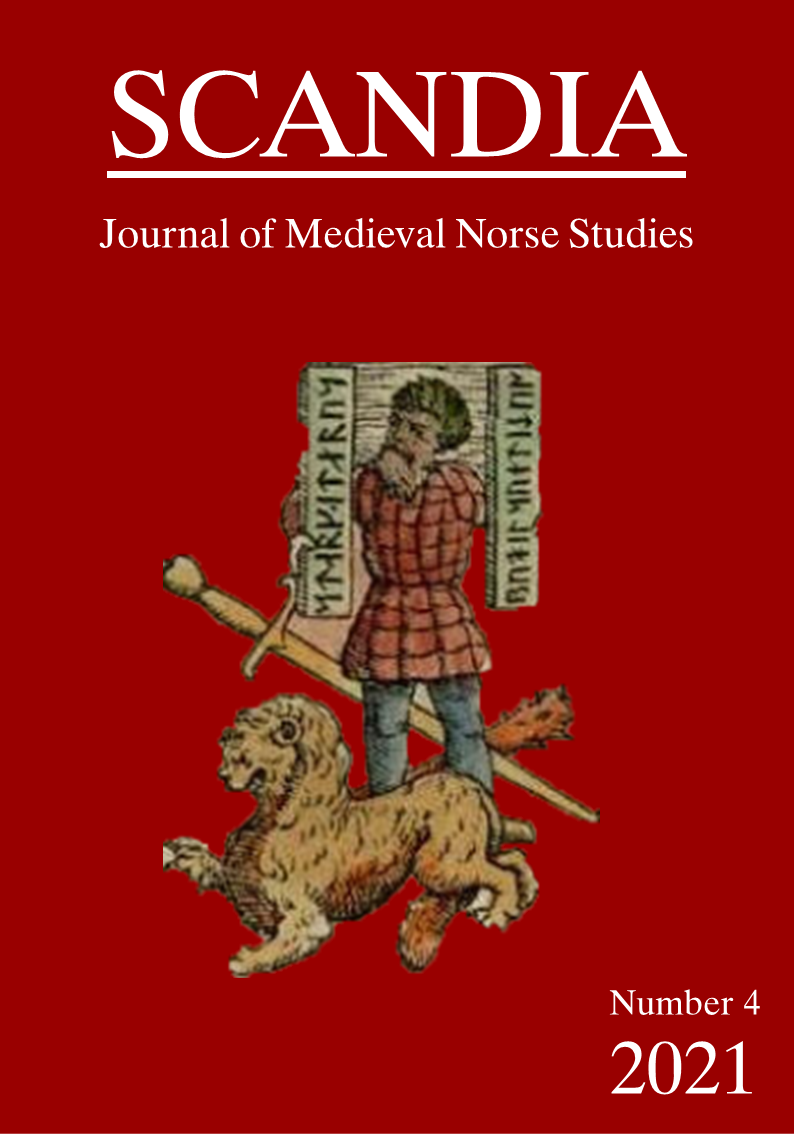SKOGTROLL: BRIEF ANALYSIS OF THEODOR KITTELSEN'S ILLUSTRATION
DOI:
https://doi.org/10.22478/ufpb.2595-9107.2021v1n4.60862Resumen
Inspired by nationalist and romantic ideas, Norwegian illustrator Theodor Kittelsen, between the end of the 19th century and the beginning of the 20th century, made several illustrations, either single or intended for publication of folk tales. This paper aims to analyze one of these illustrations, called Skogtroll. This work portrays important aspects of Nordic landscape, folklore and mythology from the artistic reception. Skogtroll is a mysterious and imposing adaptation of the troll that presents mythological meanings from the ancient Norse religion. The Norwegian landscape presents seasonal variations that create different environments, such as the endless days in summer and the mystical icy darkness of winter. This illustration presents the sacred and folklore contained in the landscape, with minimal artistic ornament and Nordic simplicity. The study of images in tales is a source for the history of mentalities and also of sensitivity, as well as for the history of devotion and human becoming about the wonder of metaphor. The historical and political context of the moment in which the illustration was created is observed. However, the cultural representations contained in the drawing are also studied. For this purpose, a theoretical contribution from art historians and Scandinavian researchers was used.
Descargas
Descargas
Publicado
Número
Sección
Licencia
The author (s) of the original submitted undertake to comply with the following:
- All authors are publicly responsible for it.
- The authors claim that this original is their own and that they assume full responsibility to third parties, whether moral or patrimonial, by reason of its content, stating that the work does not infringe any intellectual property rights of third parties.
- The author (s) agree to the copyrights of the original to Scandia Journal, to which they grant permission for its reproduction, editing and online publication.
- The author (s) grant their copyright of their original to the Scandia Journal, licensed under the Creative Commons Attribution License, which allows the sharing of this work with the acknowledgment of their authorship.
- The author (s) have permission and are encouraged to cite and distribute their original.


